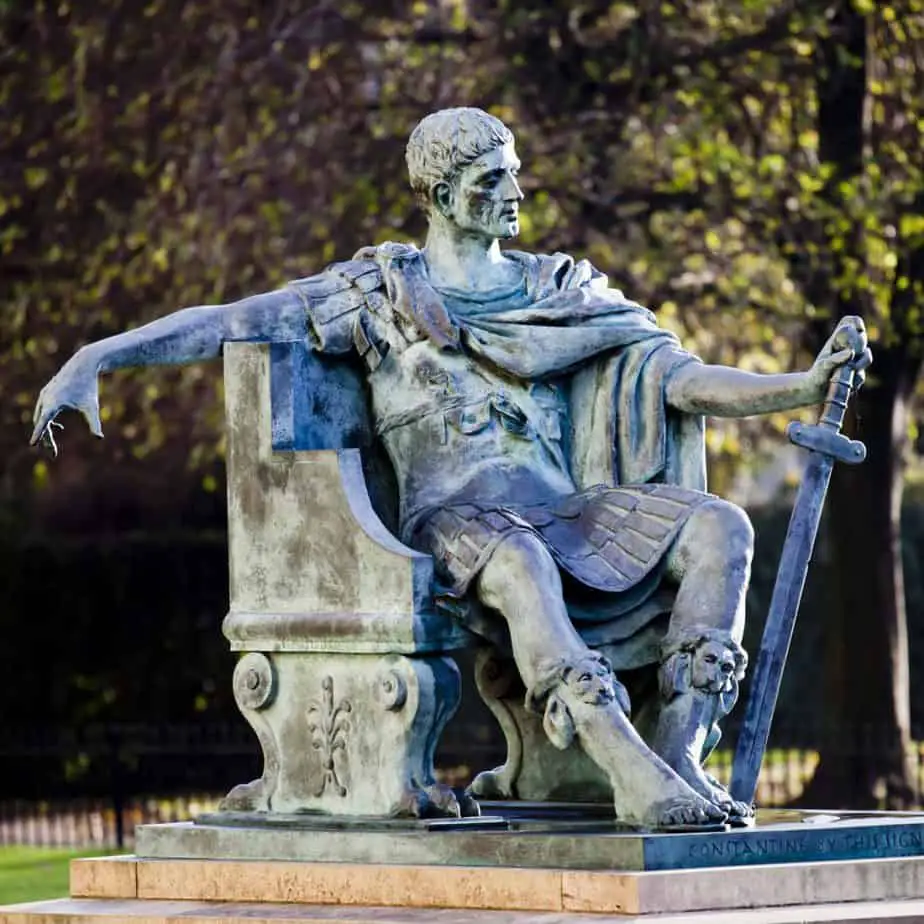For centuries, Christianity has been the largest religion in the world. In the 21st century, an estimated 2.4 billion people claim the mantel of Christianity.
How did a religion started by a peasant preacher from an oppressed nation rise to such prominence? How—and why—did Christianity become so widely accepted in a world that was so different from its starting point?
Christianity has grown primarily on the strength of its message of forgiveness, reconciliation to God, and hope for eternity. But over the centuries, Christianity had some powerful political allies that helped spread the message far and fast.
When we examine church history and world history we identify three distinct ages in the growth and spread of the Christian faith. We examine each one separately below.
The Apostolic Age
The earliest years of the church were the most critical to the growth and endurance of the Christian faith. The Apostolic Age is so named because it is marked by the ministry of Jesus’ original apostles.
Much of this age is recorded in the book of Acts, which chronicles the early ministry of Peter and several other disciples before shifting its focus to document Paul’s missionary efforts following his conversion.
The driving force behind the growth of the church in the first century was the gospel message itself, which was often affirmed through healings and other miracles performed by the apostles, who were filled with the Holy Spirit.
Two key events recorded in Acts are:
Pentecost

Acts 2 records the inauguration of the church on the day of Pentecost when the disciples were gathered together with other Jews in Jerusalem.
After an outpouring of the Holy Spirit, Peter delivered a sermon to those gathered, culminating in a call to “Repent and be baptized, every one of you, in the name of Jesus Christ for the forgiveness of your sins. And you will receive the gift of the Holy Spirit. The promise is for you and your children and for all who are far off—for all whom the Lord our God will call.” (Acts 2:38-39)
The response was significant: Those who accepted his message were baptized, and about three thousand were added to their number that day. (Acts 2:41)
Saul’s Conversion

Acts 9 describes the conversion of Saul of Tarsus, who would become better known to us as the apostle Paul. While on the road to Damascus in order to execute arrest warrants against the Christians there, Saul had an encounter with Jesus that resulted in his conversion and subsequent commission as a missionary.
It would be Paul who would travel to Asia Minor and Europe to proclaim the gospel to Jews and Gentiles alike beyond Judea.
As we review the growth of the church recorded in Acts, a consistent pattern emerges:
- Jerusalem: The apostles performed many signs and wonders among the people. And all the believers used to meet together in Solomon’s Colonnade… more and more men and women believed in the Lord and were added to their number. Acts 5:12, 14
- Philippi: The jailer called for lights, rushed in and fell trembling before Paul and Silas. 30 He then brought them out and asked, “Sirs, what must I do to be saved?” They replied, “Believe in the Lord Jesus, and you will be saved—you and your household.” Acts 16:29-31
- Thessalonica: “This Jesus I am proclaiming to you is the Messiah,” he said. Some of the Jews were persuaded and joined Paul and Silas, as did a large number of God-fearing Greeks and quite a few prominent women. Acts 17:3b-4
- Berea: They received the message with great eagerness and examined the Scriptures every day to see if what Paul said was true. As a result, many of them believed, as did also a number of prominent Greek women and many Greek men. Acts 17:11b-12
- Athens: When they heard about the resurrection of the dead, some of them sneered, but others said, “We want to hear you again on this subject.” At that, Paul left the Council. Some of the people became followers of Paul and believed. Acts 17:32-34a
In some locales, signs and miracles opened the door for the gospel message. In others, arguments from scripture and philosophical discussions became springboards for proclaiming Jesus as the messiah.
But in every instance, it was the message itself that ultimately won hearts to Jesus.
Consequently, faith comes from hearing the message, and the message is heard through the word about Christ.
Romans 10:17
Ante-Nicene Period
Over the next several centuries, the evangelistic work of the apostles was taught and passed on to subsequent generations as Christianity continued to gain followers throughout the Roman Empire.
For most of this time, persecution of Christians—by both pagans and Jews—was localized and not widespread. Also during this time, Christianity grew more religiously and politically distinct from Judaism.
In the Roman Empire, the Jews enjoyed exemptions from the mandate to burn incense and make sacrifices on behalf of the emperor. This exemption extended also to Christians, who were viewed by the Romans as a sect of Jews.
The first official action taken specifically against Christians came during the reign of Emperor Nero. When a fire destroyed much of Rome in 64 AD, Nero blamed the Christians and expelled them from the city.
Also around this time, political tension between Judea and Rome was increasing, which prompted many Christians to flee Jerusalem ahead of the Jewish revolt that began in 66 and kicked off a war that would culminate in the destruction of Jerusalem and its temple four years later.
No longer viewed as a sect within Judaism, Christianity would spread steadily over the next 150 years, while experiencing only isolated persecution, until Emperor Decius would be the first emperor to use his office to bring the weight of the empire to bear on Christians.
Persecution Increases
Responding to instability within the Empire, Decius sought to reinvigorate Rome through an edict issued in 250 that would enforce sacrifices to Roman gods and on behalf of the Emperor. Christians routinely refused to recant their faith and a large number were executed. The persecution, though widespread, was short-lived, as Decius’ edict died with him the following year.
Several of Decius’ successors would follow in his footsteps. Under Emperor Valerian ordered Christian clergy to perform pagan sacrifices under penalty of death, while also purging the Roman Senate of all Christians.
As Christian resistance to Roman sacrifices increased, so too did the Roman response. In 303, the Great Persecution began under Emperor Diocletian. During this persecution, Christians were stripped of all civil rights and Roman officials razed churches and enforced widespread executions of Christians.
Despite two centuries of localized—and sometimes widespread—persecution, Christianity proved to be resilient enough to survive. Late in the third century, Christianity’s relationship with the Roman Empire would take an even bigger turn.
The Age of Christendom

Emperor Constantine famously became the first Roman Emperor to convert to Christianity. The date and details of his conversion are debated, but his issuance of the Edict of Milan (jointly with Emperor Licinius, who controlled the Balkans) in 313 was not. The Edict of Milan officially legalized Christianity and brought an end to state-sponsored persecution of Christians.
Constantine became increasingly involved in the affairs of the church. He convened the Council of Nicaea in 325 to address doctrinal matters. From this council emerged the Nicene Creed and a universally recognized New Testament canon.
In effect, the Council of Nicaea marks the beginning of Christendom—the socio-political, culturally dominant position that Christianity would enjoy in the Western world well into the twentieth century.
One last key event took place in 380 when Christianity was declared the official state religion of the Roman Empire. With this, the church gained something that it never had before—an army.
Increased Power and Influence
After more than three centuries of being subject to the sword, the church found itself backed by the sword. As the Roman Empire continued to spread and dominate most of the European continent over the next 1000 years, Christianity and Christendom spread with it.
Christianity, by this point, had grown far beyond its apostolic origins and, in many ways, hardly resembled the faith and practice that we read in the book of Acts.
As Christianity became increasingly institutionalized and intertwined with politics, it also became associated with conquest, colonization, slave trading, and other atrocities that history would ultimately begin to question.
Still, faithful missionaries such as Saint Augustine, Saint Patrick, and—centuries later—Saint Francis, acting in the spirit and faith of the apostles, continued to emerge and spread the gospel through acts of love and healing and a message of hope.
Presently, as the trappings of Christendom have begun to fall away and the church’s cultural influence has waned in the 21st century (which we will explore in a future article), it is the original message—the message of forgiveness and eternal life through Jesus—that remains.





